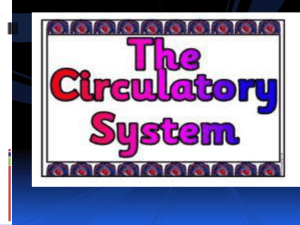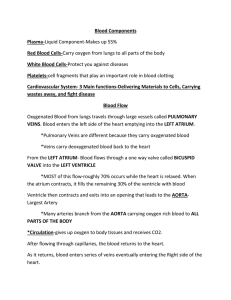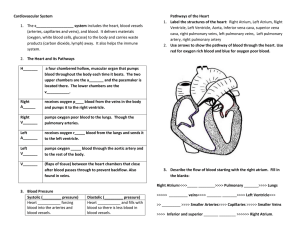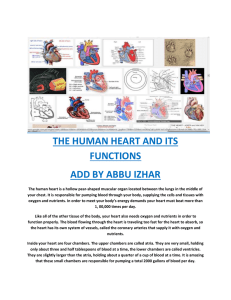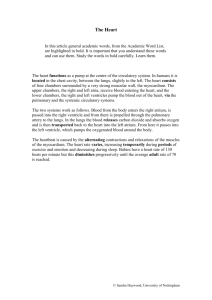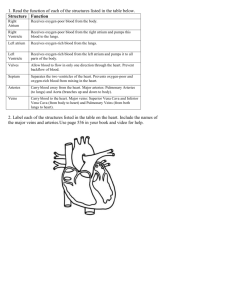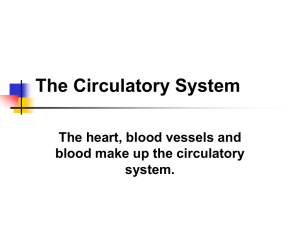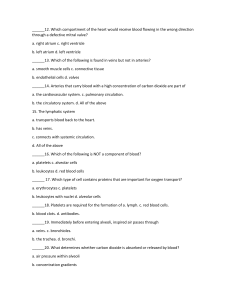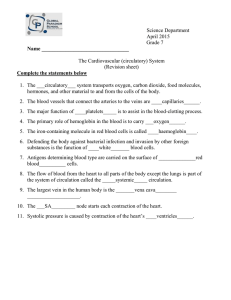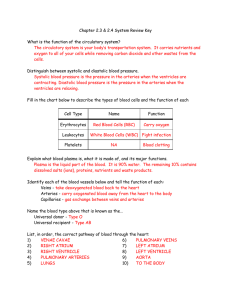sample_questions
advertisement
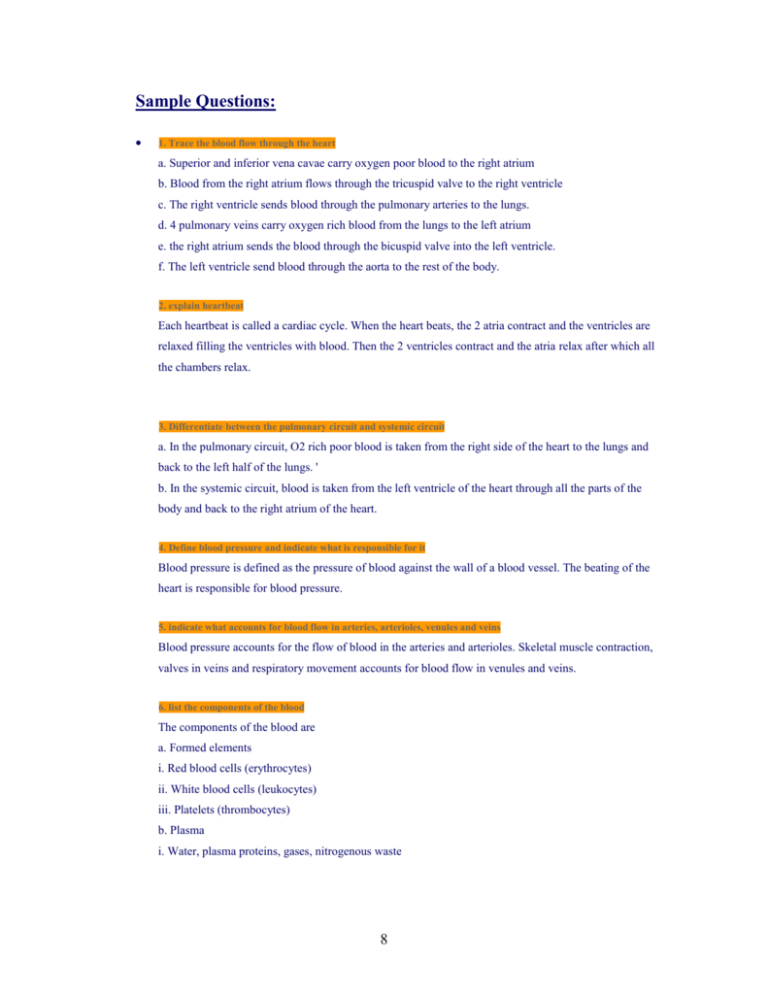
Sample Questions: 1. Trace the blood flow through the heart a. Superior and inferior vena cavae carry oxygen poor blood to the right atrium b. Blood from the right atrium flows through the tricuspid valve to the right ventricle c. The right ventricle sends blood through the pulmonary arteries to the lungs. d. 4 pulmonary veins carry oxygen rich blood from the lungs to the left atrium e. the right atrium sends the blood through the bicuspid valve into the left ventricle. f. The left ventricle send blood through the aorta to the rest of the body. 2. explain heartbeat Each heartbeat is called a cardiac cycle. When the heart beats, the 2 atria contract and the ventricles are relaxed filling the ventricles with blood. Then the 2 ventricles contract and the atria relax after which all the chambers relax. 3. Differentiate between the pulmonary circuit and systemic circuit a. In the pulmonary circuit, O2 rich poor blood is taken from the right side of the heart to the lungs and back to the left half of the lungs. ' b. In the systemic circuit, blood is taken from the left ventricle of the heart through all the parts of the body and back to the right atrium of the heart. 4. Define blood pressure and indicate what is responsible for it Blood pressure is defined as the pressure of blood against the wall of a blood vessel. The beating of the heart is responsible for blood pressure. 5. indicate what accounts for blood flow in arteries, arterioles, venules and veins Blood pressure accounts for the flow of blood in the arteries and arterioles. Skeletal muscle contraction, valves in veins and respiratory movement accounts for blood flow in venules and veins. 6. list the components of the blood The components of the blood are a. Formed elements i. Red blood cells (erythrocytes) ii. White blood cells (leukocytes) iii. Platelets (thrombocytes) b. Plasma i. Water, plasma proteins, gases, nitrogenous waste 8 7. Indicate the functions of the red blood cells, white blood cells and platelets i. Red blood cells (erythrocytes) - Transport of oxygen ii. White blood cells (leukocytes) - fights infection iii. Platelets (thrombocytes) - aids 8. List the steps of blood clotting a. Platelets and damaged tissue cells release a clotting factor called prothrombin activator which converts prothrombin to thrombin. b. Thrombin acts as enzyme to form long threads called fibrin c. Fibrin threads wound around damaged area forming clot 9. Describe some of the common disorders associated with the cardiovascular system. a. Artherosclerosis - accumulation of soft masses of fat beneath the lining of capillaries b. Stroke - death of part of the brain due to lack of oxygen caused when a small cranial arteriole bursts or is blocked by an embolus. c. Aneurysym - the ballooning of a blood vessel d. Hypertension - High blood pressure present when systolic pressure is greater than 140 or the diastolic pressure is greater than 90. 10. Indicate how cardiovascular disease can be prevented Cardiovascular disease can be prevented by diet low in cholesterol and by exercise. 9
